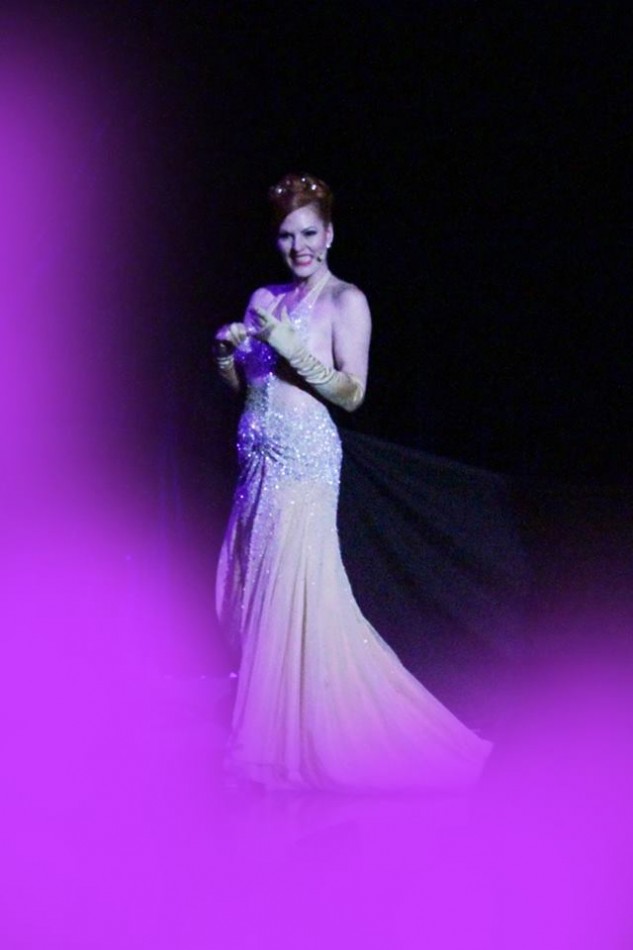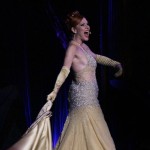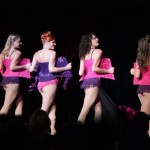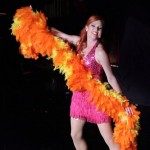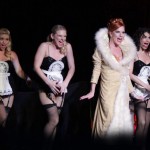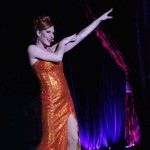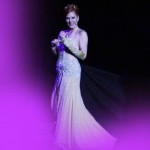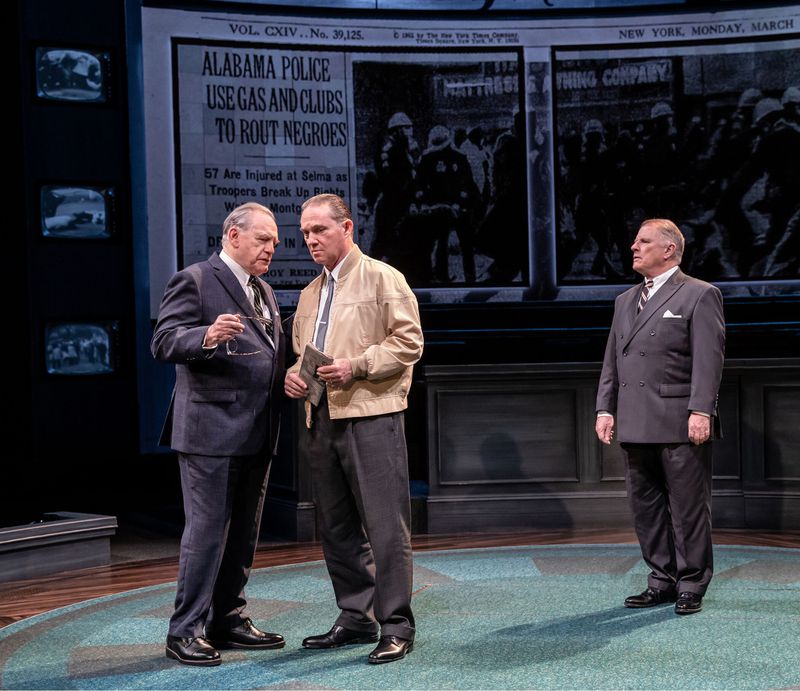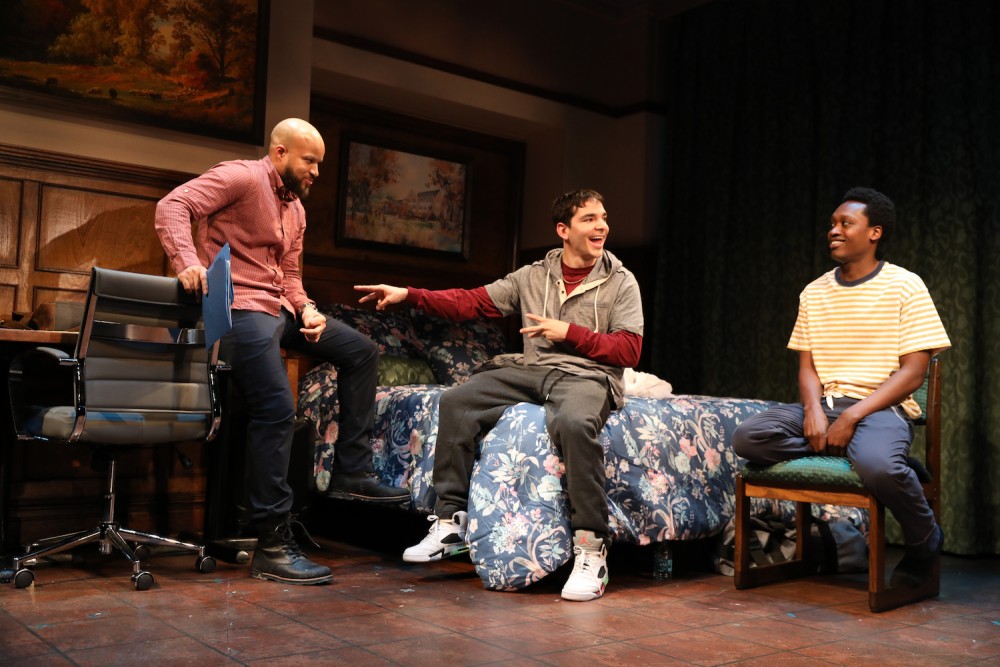Review by Linda Amiel Burns
Quinn Lemley’s lively revue at The Cutting Room tells the story of Burlesque, a kind of variety entertainment popular in the US in the late 19th and early 20th centuries that some describe as a humorous and provocative stage show, featuring slapstick humor, comic skits, bawdy songs, striptease acts, and sometime a scantily clad female chorus. The show celebrates some of the woman who went from “Burlesque to Broadway” but many she mentioned began in Vaudeville, i.e.Sophie Tucker, Mae West, Fanny Brice. The difference between the two was that Vaudeville was more G rated, acts that you could bring the family to, but Burlesque was R rated for adults, involving racy humor and nudity. While it was common for burlesque stars to graduate into vaudeville, vaudevillians considered it a fatal disgrace to appear in burlesque, insisting that only those who were “washed up” would stoop so low. Yet many a vaudeville veteran hit appeared in Burlesque during dry spells, appearing under assumed names.
In the 1920s, when many of the Burlesque circuits closed down, theater owners introduced the striptease as a desperate bid to offer something that vaudeville, film and radio could not. Some gave stripping an artistic twist and graduated to general stardom, including fan dancer Sally Rand and former vaudevillian, the comically intellectual Gypsy Rose Lee. Reform-minded Mayor Fiorello LaGuardia led the now legendary raid on Minsky’s and most of NY’s burlesque houses were closed by 1937.
Quinn Lemley is a consummate entertainer and always glamorous in her many stunning costume changes that are quite effective. The “Burlesque to Broadway Band” consisted of nine outstanding musicians, Daniel Lincoln- Musical Direction and piano, Ryan Resky – lead trumpet, Benjamin Hankle – trumpet 2, Bradley Madsen – trombone, Matt Chiasson – reeds, Tom Pollard – drums, Tony Ventura – bass, Jason Cohen- synth, Braden Palmer – guitar and they added a lot of oomph to the proceedings. Unfortunately, I was seated on the side and could only see the piano and the impact would have been greater had I been able to see the band and the full stage head on. Quinn had four pretty “girls” with great voices and comic timing dancing with her, helping with costume changes and telling some of the old time “corny” jokes that were so popular at the time. There was Stacy Harris as Razz, Samantha Stolzfus as Gracie, Jenna Rubail as LoRita St. Lo, Chelsea Turbin as Trixie L’Amour with choreography by David Eggers, Costumes and Fans by Wendall Goings
The best numbers were those that reflected what Burlesque was about such as “That Terrific Rainbow” from Pal Joey that starts with “I’m a Red Hot Mama” and “Big Spender” from Sweet Charity, which showed the racy side of this art form as the women used sex to get what they want. Quinn sang the classic “10 Cents a Dance” about the humiliation of the women working the dance halls for hours each night, and “My Heart Belongs To Daddy” showing how the art of seduction was used to attract men who could take care of them. Fanny Brice was a major star that rose from Vaudeville to The Ziegfield Follies on Broadway, and Quinn performed a touching “My Man,” a song made famous by Ms. Brice. Sometime the song choices were problematic as she ended the first act with “Don’t Rain On My Parade;” although well sung, didn’t seem to fit into the theme.
The 2nd Act opened with a strong and sexy “I Want To Be Evil” and one of the best numbers was “When You’ve Got It, Flaunt it” from The Producers performed with the back-up girls and large pink boas. In fun, Quinn brought up some volunteers from the audience who were good sports as she and the girls instructed them on how to do the bumps and grinds and the art of the striptease to the tune of Berlin’s “Let Yourself Go.” Then the entire audience was asked to get out of their seats to participate.
The Tribute to Sally Rand was one of the best numbers in the show as Quinn and the girls danced with large feathered fans while stripping, yet revealing little. It gave the audience a real taste of what the best of burlesque had been.
The tribute to the women of the James Bond films was celebrated with the fun song “Kiss Kiss Bang Bang” because Quinn said that these women were good at the “tease.” However, that seemed to be stretching things a bit as they are fictional women and were used as ornaments in the films. Quinn said, at one point, that Burlesque was about “female empowerment and allowed women to re-invent themselves.” Not sure how accurate that was as only a few women were able to rise about the sleazy aspect of burlesque and become stars and achieve independence. Ann Corio was one of those women who was successful by bringing her show, “This Was Burlesque,” off –Broadway and it ran in many different forms and places for nearly 30 years.
I saw this show “Burlesque To Broadway” in different incarnations at BB Kings and The Gramercy Theater and, despite a few reservations concerning some of the patter, this is by far the best version of the show and many of the changes have worked. Quinn Lemley and her Production Team deserve kudos for bringing back this entertaining art form and putting on a terrific show. There has been a revival lately in Burlesque shows, but there is nothing quite like ” Burlesque to Broadway” and this high-octane revue makes for an enjoyable evening on the town!
*Photos and Video: Russ Weatherford
There are two shows remaining in the run at The Cutting Room.
November 17th & 24th. For tickets call: 877 435-9849
For more info: www.burlesquetobroadway.com


